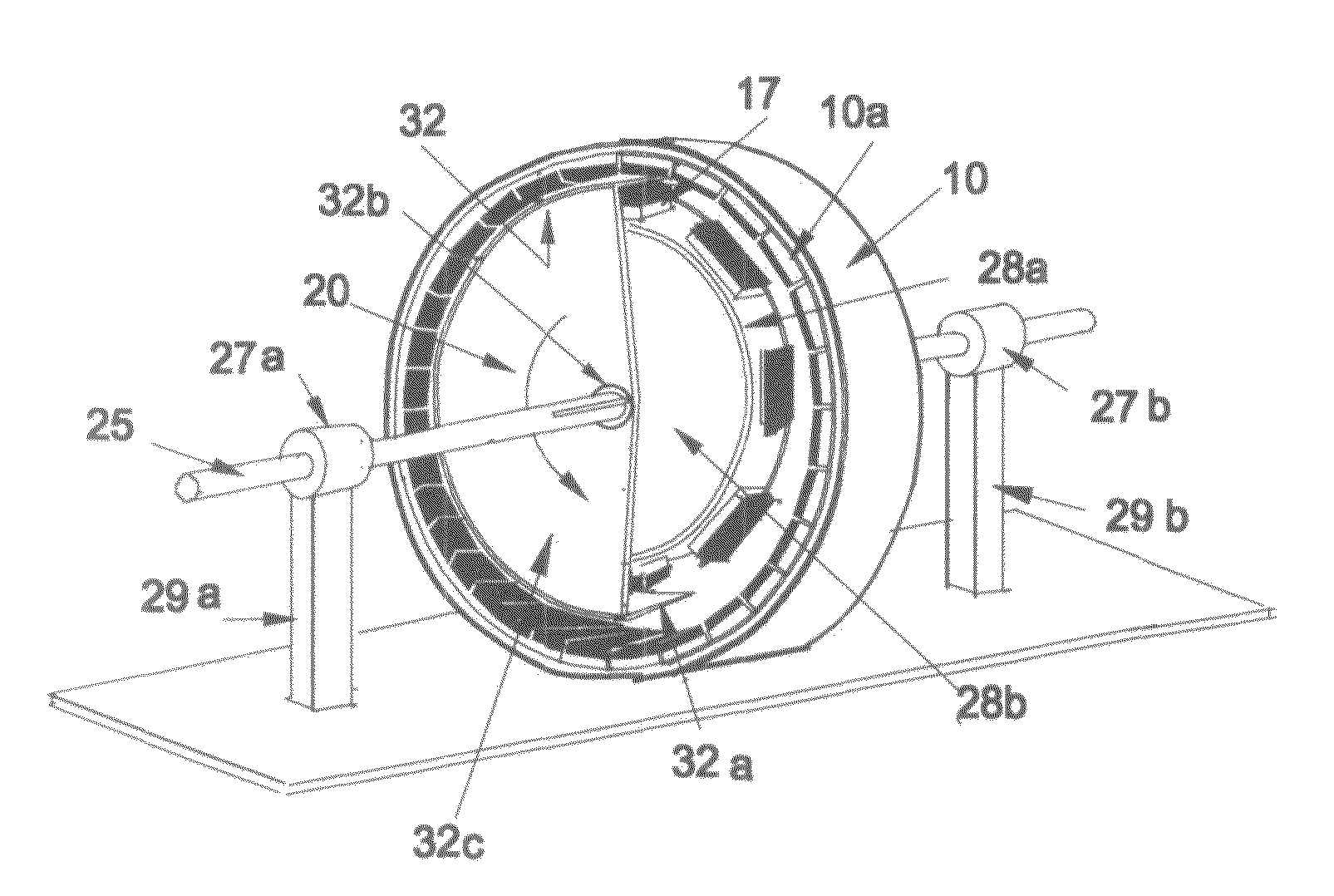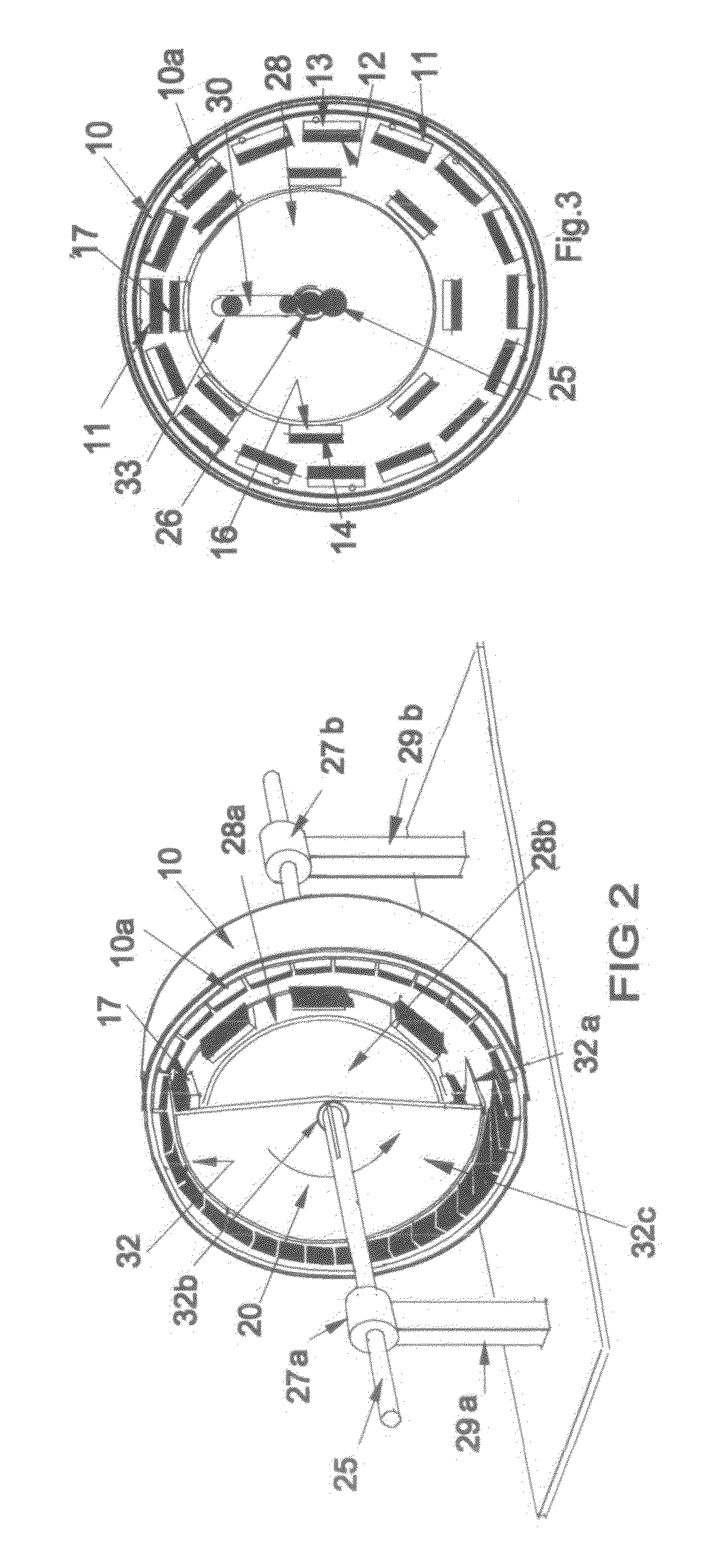Motion conversion device
a technology of rotational magnetic and motor, which is applied in the direction of dynamo-electric machines, electrical apparatus, propulsion systems, etc., can solve the problems of limited success inability to achieve rotational movement in the motor, and general inefficiency of permanent magnet motors, etc., to achieve simple and feasible operation, increase the working power of the motor, and improve the effect of the working efficiency
- Summary
- Abstract
- Description
- Claims
- Application Information
AI Technical Summary
Benefits of technology
Problems solved by technology
Method used
Image
Examples
Embodiment Construction
[0014]Referring to the drawings and initially to FIG. 1, the components of the motion conversion device, or the permanent magnetic rotational motor of the present invention are shown in isometric views and in exploded fashion. Iron band member 32 comprises an arcuate band component 32a with offset crankshaft attachment point 32b and protective wall 32c. Iron band member 32 is configured to rotate in the direction designated by arrow 20, shown in FIGS. 2, 4-7.
[0015]Rotor assembly 28 is circular in configuration, comprising circular outer wall 28a, protective wall 28b, journal attachment point 28c, and slot 30. Rotor magnets 14 on outer wall 28a circumscribe rotor assembly 28. Master rotor magnet 17 is positioned on the uppermost surface of wall 28a. Each rotor magnet 14, as well as master rotor magnet 17, has polarized faces 15 and 16, north and south poles, respectively.
[0016]Stator 10 is an annular body with a ring shaped outer wall 10a. Attached to and circumferentially extending ...
PUM
 Login to View More
Login to View More Abstract
Description
Claims
Application Information
 Login to View More
Login to View More - R&D
- Intellectual Property
- Life Sciences
- Materials
- Tech Scout
- Unparalleled Data Quality
- Higher Quality Content
- 60% Fewer Hallucinations
Browse by: Latest US Patents, China's latest patents, Technical Efficacy Thesaurus, Application Domain, Technology Topic, Popular Technical Reports.
© 2025 PatSnap. All rights reserved.Legal|Privacy policy|Modern Slavery Act Transparency Statement|Sitemap|About US| Contact US: help@patsnap.com



